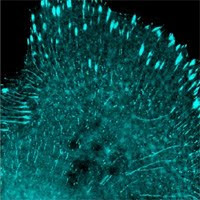Most people use standard cloning procedures when trying to insert shRNA templates into lentiviral vectors, i.e. anneal a pair of long oligos with sticky ends and ligate the dsDNA into a linearized plasmid with compatible overhangs. However, since typical lentiviral vector plasmids have terminal repeats and are relatively large, when ligated to hairpin sequence-containing shRNA templates, recombination often occurs inside bacteria that results in smaller plasmids. This problem is common for cloning shRNA or other unstable DNA pieces into viral vectors. This cloning issue is further compounded by the fact that it is difficult to sequence any shRNA template region because the hairpin may block the progress of the DNA polymerase used in sequencing, sometimes requiring several repeats under different sequencing conditions, incurring high costs charged by sequencing service providers.
To deal with these aspects of the cloning difficulties, particularly for the purpose of increasing cloning efficiency RNAi-based screening, we compared three different strategies
First, we built a smaller shRNA cloning vector to clone and sequence shRNA templates prior to transferring to lentiviral vectors. This smaller vector does not have a severe recombination problem and is easier to sequence in the hairpin-containing region. After an initial round of cloning with this new vector, we further improved it by inserting an XbaI and a NheI site between the BamHI and SpeI insertion sites, so that any plasmid preparations can be screened for recombinants by a simple XbaI or NheI digest before sequencing. After cloning into this intermediate vector, the shRNA expression cassette can be transferred into the lentivirus vectors with some flanking viral sequences so that the insert size will be around 1kb.
Second, we developed a novel DNA preparation procedure after realizing that DNA damage during miniprep of vector plasmids and gel purification of vector fragment increased recombination of these constructs, which were already less stable than usual due to hairpin structures. This procedure of DNA preparation avoids UV or guanidium exposure, which can cause nicks on double-stranded DNA and facilitate recombination. This new procedure relies on purifying DNA through surface-binding to regular reaction tubes treated with a proprietary reagent (SurfaceBind Purification). The process simply requires adding a proprietary, guanidium-free binding buffer to the DNA, which has been processed in a specially coated tube (eppendorf or thin-wall PCR tube), and purifying directly in the same tube. Vectors prepared this way indeed provide more colony counts and a higher percentage of correct constructs as shown by our test runs. The procedure also requires less time and the purified DNA can be dissolved in volumes as small as a few microliters.
Third, to enable truly high throughput shRNA screening (i.e. looking for effective RNAi reagents), we further tested and adapted a ligationless cloning protocol that can be handled by a liquid handler almost entirely. In order to increase throughput, we designed a drastically different procedure that could bypass ligation and sequencing altogether before functional tests. Briefly, DNA molecules that would provide enhanced recombination were created by one round of PCR, purified directly in the surface bind PCR reaction tubes (any template DNA would be removed with DpnI enzyme that cuts non-PCR DNA), pooled, and transformed in bacteria directly. DNA plasmids from transformed bacteria can be used for lentivirus packaging, bypassing sequencing at the initial screening stage, and choose single colonies for sequencing only after a shRNA sequence shows promise in functional assays. This is based on the fact that such cloning rarely has any background colonies, and that among all oligos (if using the correct grade of oligos from validated suppliers) inserted this way, a good portion encodes the correct sequence.
New Products of the week: 100x 15mm EcoCulture Vented Dishes for better stem cell attachment and less plastic waste to the environment, APB-CS-114TC.
Promotion of the week: Buy 1 Stealth Express IPS Induction PCR Template Set, get 1 SurfaceBind RNA Purification Kit free. Use code FreePureRNA.



